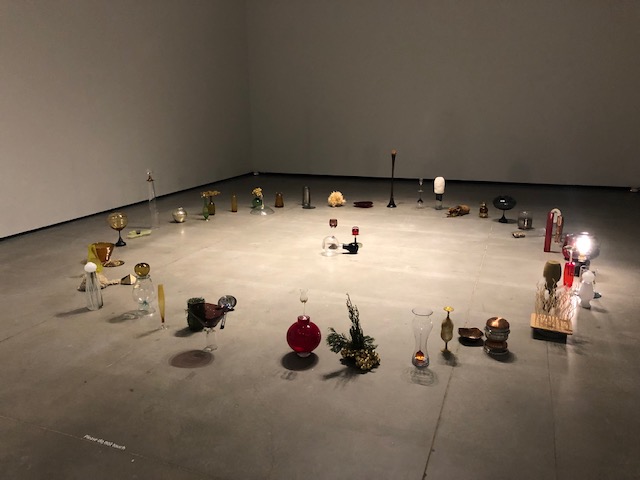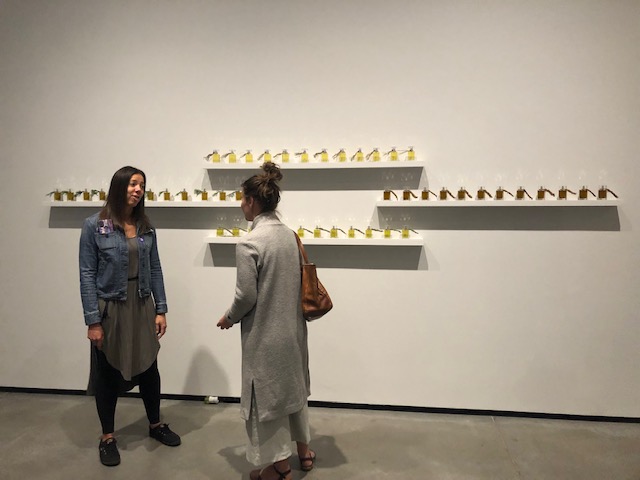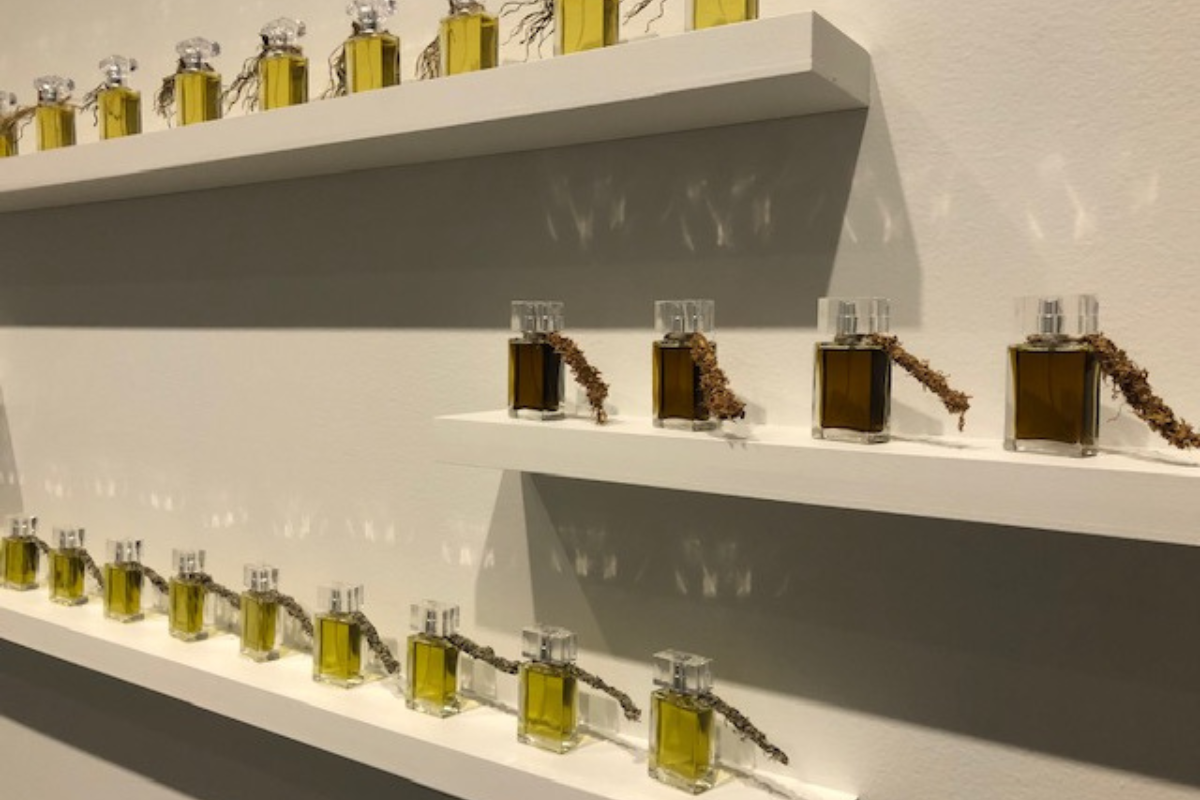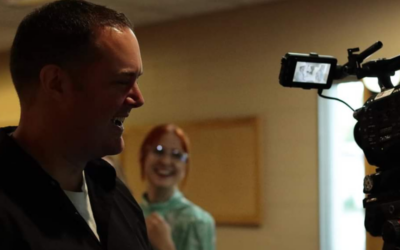Artist Rolande Souliere is now displaying her new scented art, called The Four Directions of Movement, at the Art Gallery of Alberta. Four Directions uses smell to tell her story as an Indigenous girl and a follower of the Nishnawbe philosophy, which connects the four cardinal directions (north, south, west and east) to the medicine, womb and sacred medicines.

“Within it’s kind of complex, so I’m kind of abstracting it in a way but infusing an initial [Thunder] Bay worldview that sits in the medicine wheel and in the directions,” said Souliere. The Thunder Bay worldview is in reference to the Nishnawbe Aski Nation, located in the Treaty 5 and 9 areas of northern Ontario.
Drawing from this ideology, the artist explains that the sacred medicines—cedar, tobacco, sweetgrass and sage—make the base of the perfumes. These sacred medicines also sit within a direction of the compass. To represent these medicines artistically, the artist arranged objects and glass vases in a circle on the floor, with the north direction representing sweet grass, the west pointing to cedar, the south symbolizing sage and the east signifying tobacco.
“Animals are [also] associated with it, but not the animal per se, but the personality traits observed by you know, First Nation,” she said. For example, the characteristics of a deer are gentle, observant and kind so they land within the north direction with sweetgrass. Many First Nations people believe animals represent various stories, personalities, values and stories throughout history.

For Souliere to find the smells, the images to display on rolodexes and how to infuse them necessitated trial and error and loads of research. First, the process required her and a perfumer working together for eight months, recreating the impressing scents from her childhood. “You know, I would sleep with, not sleep with the tobacco, but like I would have the tobacco perfume beside me. So when I wake up in the morning, that’s when I’m the freshest,” she said. Over time, she eventually narrowed down the top notes that reminisced of her childhood.
And as for the images, it required her combing through countless photographs from the 1800s for the perfect nose, a nose that was croppable and could be shrunk. “You know, looking through, trying to find a nice Deschamps’ nose was quite difficult. But when you crop it like the nose disappears. No, it’s really hard or like it becomes abstract or you know it looks like a penis,” said Souliere. In case you’re wondering, she found her nose—in fact, several for the rolodexes.
From the infused exhibition, Souliere hopes attendees “gain knowledge of not only in the Western, and [that] the surrealists use you know cedar oil, which is one of our sacred medicines come to break the hierarchy and move away from bourgeoisie art. But at the same time, know that is a sacred First Nations’ medicine and we’ve always used it at ceremonies,” she said.
As Souliere revealed, she is currently working on several other projects, including a popular culture painting and a Thunderbird installation. If your interest is peaked and would like to experience her childhood via smell, her Four Directions exhibit is on display until December 31st at Edmonton’s Art Gallery of Alberta. Admission for students is free, but a $5 donation is encouraged.





